Do you have a question about the Oregon Scientific RMR182 and is the answer not in the manual?
Facilitates easy reading of remote and indoor temperatures and calendar clock.
Indicates the condition of radio reception.
Indicates the trend of temperature changes.
Activates when the remote-sensor battery is low.
Activates when the battery is low.
Appears when the alarm is activated.
Appears when the alarm time is displayed.
Toggles between display modes and confirms entry while setting values.
Displays and sets the alarm time.
Displays maximum / minimum temperature.
Selects remote-sensor channels.
Advance or decrease the value of a setting.
Enables or disables the alarms.
Returns all settings to default values.
Selects between degree Centigrade (°C) and Fahrenheit (°F).
Accommodates two (2) UM-3 or "AA" size batteries.
For standing the main unit on a flat surface.
For mounting the main unit on a wall.
Displays the current temperature monitored by the remote unit.
Flashes when the remote unit transmits a reading.
Selects between Centigrade (°C) and Fahrenheit (°F).
Designates the remote unit Channel 1, Channel 2 or Channel 3.
Returns all settings to default values.
Accommodates two UM-4 or "AAA" size batteries.
Supports the remote unit in wall-mounting.
For standing the remote unit on a flat surface.
Instructions for installing batteries and setting channels/units on the remote unit.
Instructions for installing batteries in the main unit.
How the low battery status is displayed on the unit.
Instructions on using the table stand and wall mount for the main unit.
Instructions on using the wall-mount holder and table stand for the remote unit.
How to use the reset button to restore default settings.
Initial steps after installing batteries for unit synchronization.
Steps to take if no signals are received or to enforce a search.
How to cycle through channels and interpret signal strength.
Explains the meaning of rising, steady, and falling temperature trends.
How to display and clear recorded maximum and minimum temperatures.
How to select between Celsius and Fahrenheit for temperature display.
Interpreting the kinetic wave display for signal receiving status.
Steps to resolve blank displays for a particular channel.
Explanation of potential interference from other devices.
Details the four supported display modes for local and second time zones.
How the clock synchronizes with the DCF77 radio signal and reception strength.
How to turn the auto-reception feature on or off.
Step-by-step guide to manually setting the clock and date.
Instructions for setting and activating Alarm 1 and Alarm 2.
How to stop a ringing alarm and deactivate the alarm function.
Reference for time zone differences and offsets worldwide.
Important safety and handling instructions to ensure product longevity.
Detailed ranges, resolution, and transmission frequency for temperature measurement.
Details on time synchronization, display formats, and alarm features.
Information on battery types needed for the main and remote units.
Physical characteristics of the main and remote sensing units.
Disclaimers regarding manual content accuracy and reproduction.
Information on accessing product details, support, and downloads online.
Compliance statement regarding R&TTE Directive and applied standards.
Compliance with Low Voltage and EMC Directives, and CE marking.
List of countries where the product has RTTE approval.
| Brand | Oregon Scientific |
|---|---|
| Model | RMR182 |
| Category | Thermometer |
| Language | English |
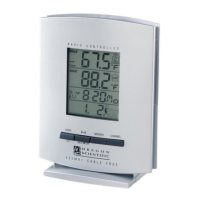
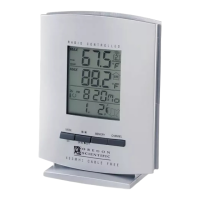
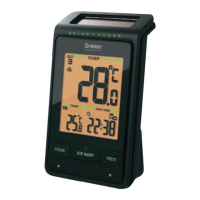
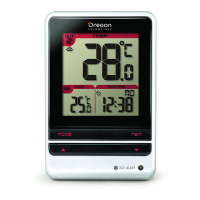
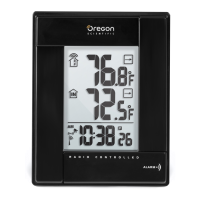


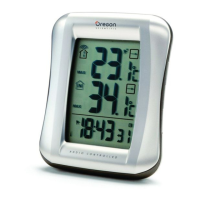
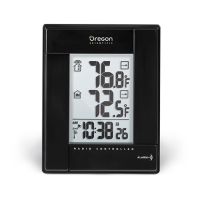
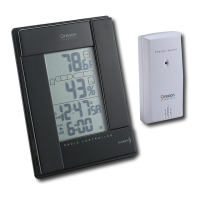
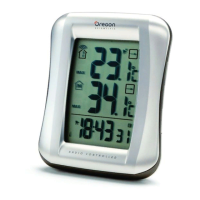

